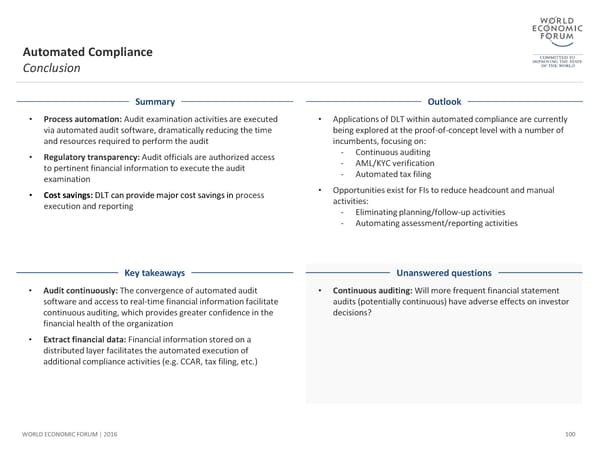Automated Compliance Conclusion Summary Outlook • Process automation: Audit examination activities are executed • Applications of DLT within automated compliance are currently via automated audit software, dramatically reducing the time being explored at the proof-of-concept level with a number of and resources required to perform the audit incumbents, focusing on: • Regulatory transparency:Audit officials are authorized access - Continuous auditing to pertinent financial information to execute the audit - AML/KYC verification examination - Automated tax filing • Cost savings: DLT can provide major cost savings in process • Opportunities exist for FIs to reduce headcount and manual execution and reporting activities: - Eliminating planning/follow-up activities - Automating assessment/reporting activities Key takeaways Unanswered questions • Audit continuously: The convergence of automated audit • Continuous auditing: Will more frequent financial statement software and access to real-time financial information facilitate audits (potentially continuous) have adverse effects on investor continuous auditing, which provides greater confidence in the decisions? financial health of the organization • Extract financial data: Financial information stored on a distributed layer facilitates the automated execution of additional compliance activities (e.g. CCAR, tax filing, etc.) WORLD ECONOMIC FORUM | 2016 100
 The Future of Financial Infrastructure Page 99 Page 101
The Future of Financial Infrastructure Page 99 Page 101